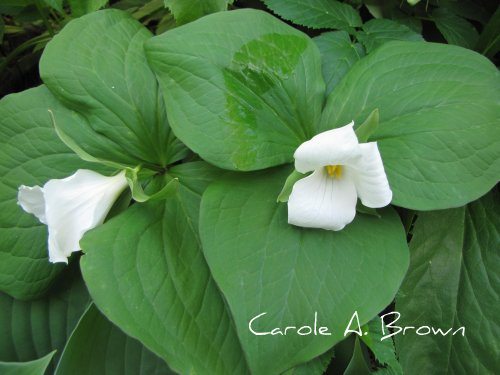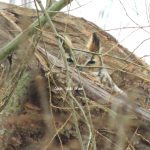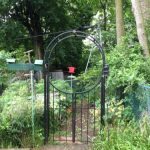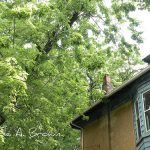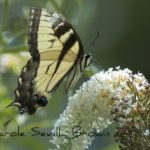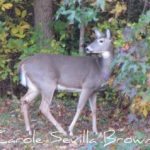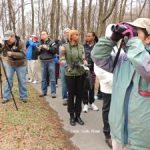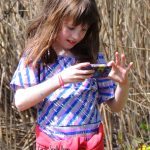I was chatting last night with my twitter friend @OurLittleAcre, otherwise known as Kylee Baumle, author of the wonderful blog, Our Little Acre. She had a trillium in bloom in her garden, and she wasn’t sure which species it was.
So, using the tools at her disposal, she posted a photo on twitter and asked for help.
You may remember that Trilliums are among my favorite wildflowers, and I had a good idea which one it was (Trillium ovatum), but I checked the USDA plants database and sent my response off to Kylee.
If you clicked that link to the USDA plants database, you may have noticed that Trillium’s common name is “Pacific Trillium,” and you might assume that Kylee lives on the West Coast. But that would be a false assumption to make.
Kylee’s Little Acre is located in Ohio, and she had purchased this Trillium from her local Lowes in a selection of prepackaged “natives.”
Now this totally begs the question “What is native?”
Some suppliers call plants native if they are native to the US. You have to be really careful if purchasing from this type of supplier, though. A native plant to Florida will probably not do very well in your Michigan garden. An Arizona native is not going to thrive in your Pennsylvania garden.
Other gardeners are much more specific about what native means, some will only purchase plants that are native to their state. Some will only purchase plants that have been propagated within a 50 mile radius of their home.
The question is, how do YOU define native?
“Our Little Acre” by Kylee Baumle is a charming, down-to-earth book about one woman’s journey to create a wildlife-friendly garden in her own backyard.
In the book, Kylee shares her experiences and lessons learned as she transforms her small, suburban lot into a thriving wildlife habitat. She covers everything from planning and designing her garden, to choosing the right plants and creating inviting spaces for birds, butterflies, and other critters.
One of the things I love about this book is how accessible and relatable it is. Kylee writes with a casual, conversational tone that makes you feel like you’re chatting with a friend over a cup of tea. And even though she’s a seasoned gardener, she’s not afraid to admit when she’s made mistakes or had to learn things the hard way. It’s this honesty and vulnerability that makes the book so endearing.
Of course, the other thing that makes “Our Little Acre” so great is all the amazing tips and advice Kylee shares. Whether you’re a seasoned gardener or a complete newbie, there’s something in this book for everyone. From the basics of soil and composting, to more advanced topics like attracting beneficial insects and creating a frog pond, Kylee covers it all.
More From Ecosystem Gardening:
Submit your review | |
I think technically I would define where the plants have co-evolved in a specific geographical areas. It means it is acclimated to specific climate and general weather changes in the area. It also has generally symbiotic relationship with soil and above soil biology including bacteria, fungus, insects, birds and other animals. So, if the geography changes in 50 miles, then, yes, your native plants also changes with it. They are generally resistant to native pest and diseases (they may get attacked but not completely obliterated). But, they can be vulnerable to non-native and invasive pests and blights. For example, ash, chestnut and hemlock trees. Artificially cultivated, hybridized, grafted and other way modified plants and trees can not be called native plants. As far as edible plants are concerned, I consider pre-colonization Native Americans' food is truly native.... wild as well as cultivated.

